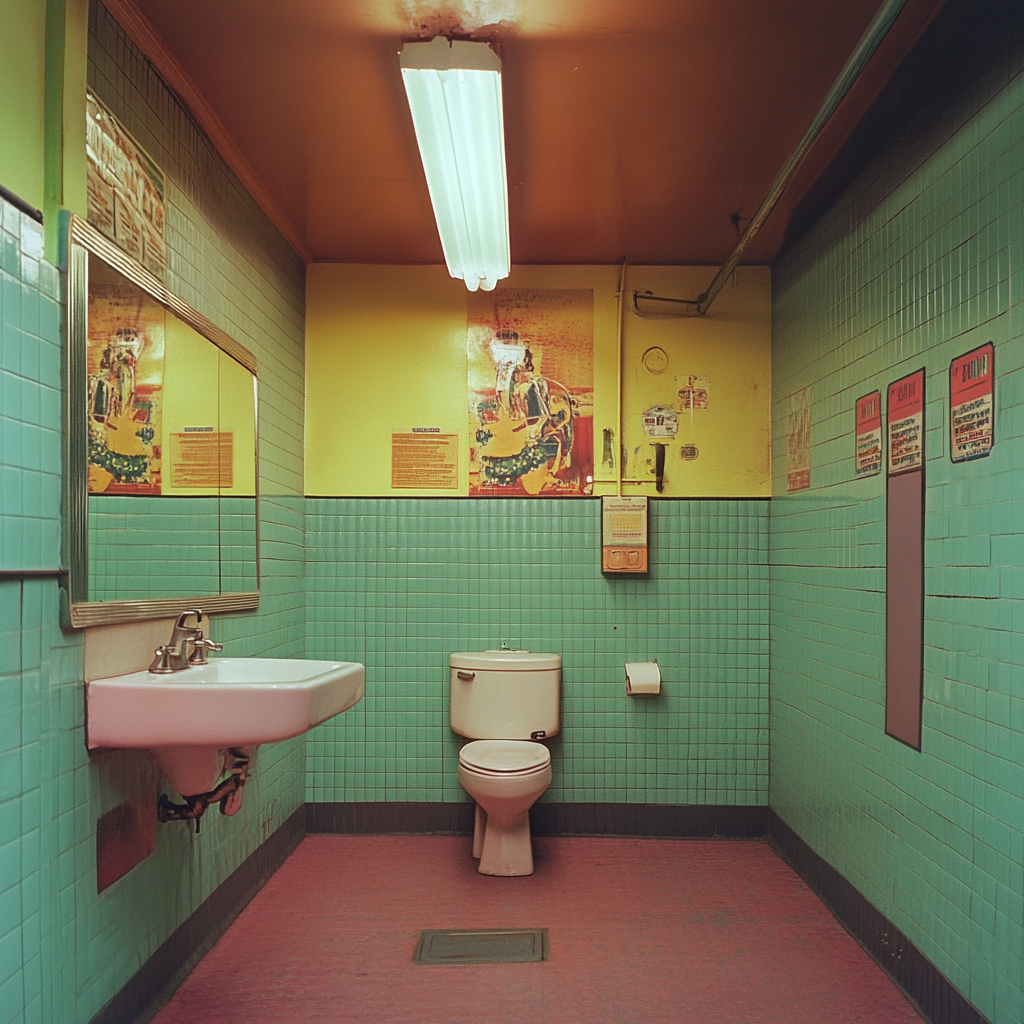Public restrooms are a necessary evil in our daily lives. We use them at work, while shopping, or during travel. But beneath the surface of these seemingly innocuous facilities lurk hidden dangers that could impact your health and well-being. From microscopic menaces to unexpected safety hazards, public restrooms are far from the safe havens we assume them to be.
1. The Invisible Germ Factory
When you step into a public restroom, you’re entering a microscopic war zone. These shared spaces are breeding grounds for a host of pathogens, including bacteria, viruses, and fungi. The most common culprits include E. coli, salmonella, and norovirus, all of which can cause severe gastrointestinal issues. But the danger doesn’t stop at the toilet seat. Every surface, from doorknobs to faucet handles, can harbor these invisible invaders.
What’s more alarming is the phenomenon known as the “toilet plume.” When you flush, a fine mist of water and waste particles is aerosolized, spreading microbes up to 5 feet in the air. These particles can remain suspended for up to an hour, settling on nearby surfaces and potentially entering your respiratory system. To minimize your exposure, always close the toilet lid before flushing (if there is one), and use hand sanitizer immediately after using the facilities.
2. The Hidden Chemical Hazard
While cleanliness is crucial in public restrooms, the methods used to achieve it can pose their own risks. Many facilities use harsh chemical cleaners and disinfectants to combat germs and odors. These products often contain volatile organic compounds (VOCs) that can irritate your eyes, nose, and throat. In poorly ventilated spaces, prolonged exposure to these chemicals can lead to headaches, dizziness, and even respiratory issues.
Moreover, the residue from these cleaning agents can linger on surfaces, potentially coming into contact with your skin or clothing. For individuals with sensitive skin or allergies, this contact could result in rashes or other adverse reactions. To protect yourself, try to limit your time in freshly cleaned restrooms and avoid direct contact with surfaces as much as possible. Consider carrying a portable air purifier for added protection against airborne chemical particles.
3. The Slip and Fall Peril
Public restrooms are often hotbeds for slip and fall accidents. The combination of smooth, often wet surfaces and hurried users creates a perfect storm for potential injuries. Tile floors, while easy to clean, become treacherous when wet. Add to this the possibility of paper towels or toilet paper on the floor, and you’ve got a recipe for disaster. These accidents can range from minor bruises to serious injuries like fractures or concussions.
What’s more, many public restrooms lack proper maintenance, leading to uneven flooring, loose tiles, or damaged thresholds. These hazards are often overlooked but can cause significant harm. To stay safe, always be aware of your surroundings, wear shoes with good traction, and report any hazardous conditions to the facility management. Consider carrying a compact portable umbrella to use as a makeshift walking stick if you’re concerned about stability in wet conditions.
4. The Privacy Predicament
While public restrooms are designed to provide privacy, they can sometimes become unexpected hotspots for criminal activity. The isolated nature of these spaces can make them attractive to thieves and other wrongdoers. Restroom stalls with gaps in the doors or malfunctioning locks can compromise your privacy and safety. In some cases, hidden cameras have been discovered in public restrooms, violating users’ privacy and potentially leading to blackmail or other nefarious activities.
For those who carry personal items or valuables, public restrooms can be particularly risky. The cramped spaces and lack of secure storage options often force users to place their belongings on potentially unsanitary floors or hang them on unreliable hooks. This not only exposes your items to germs but also makes them easy targets for theft. To protect yourself, always be aware of your surroundings, check for functional locks, and keep your valuables close to you at all times. Consider investing in a anti-theft backpack for added security when using public facilities.
5. The Accessibility Trap
While public restrooms are meant to serve everyone, they often fall short when it comes to accessibility. For individuals with disabilities or mobility issues, using a public restroom can be a challenging and sometimes dangerous experience. Many facilities lack proper accommodations such as grab bars, adequate space for wheelchairs, or easily reachable fixtures. This not only makes using the restroom difficult but can also lead to accidents or injuries.
Even for those without disabilities, poorly designed restrooms can pose unexpected hazards. Awkwardly placed fixtures, narrow stalls, or hard-to-reach toilet paper dispensers can force users into uncomfortable or precarious positions. This can lead to strain, falls, or other injuries. Moreover, the lack of public restrooms in many areas can force individuals with medical conditions like Crohn’s disease or overactive bladder into desperate situations. To mitigate these risks, always scout out accessible restrooms in advance when possible, and don’t hesitate to ask for assistance if needed. Consider carrying a portable toilet seat riser for added comfort and safety.

